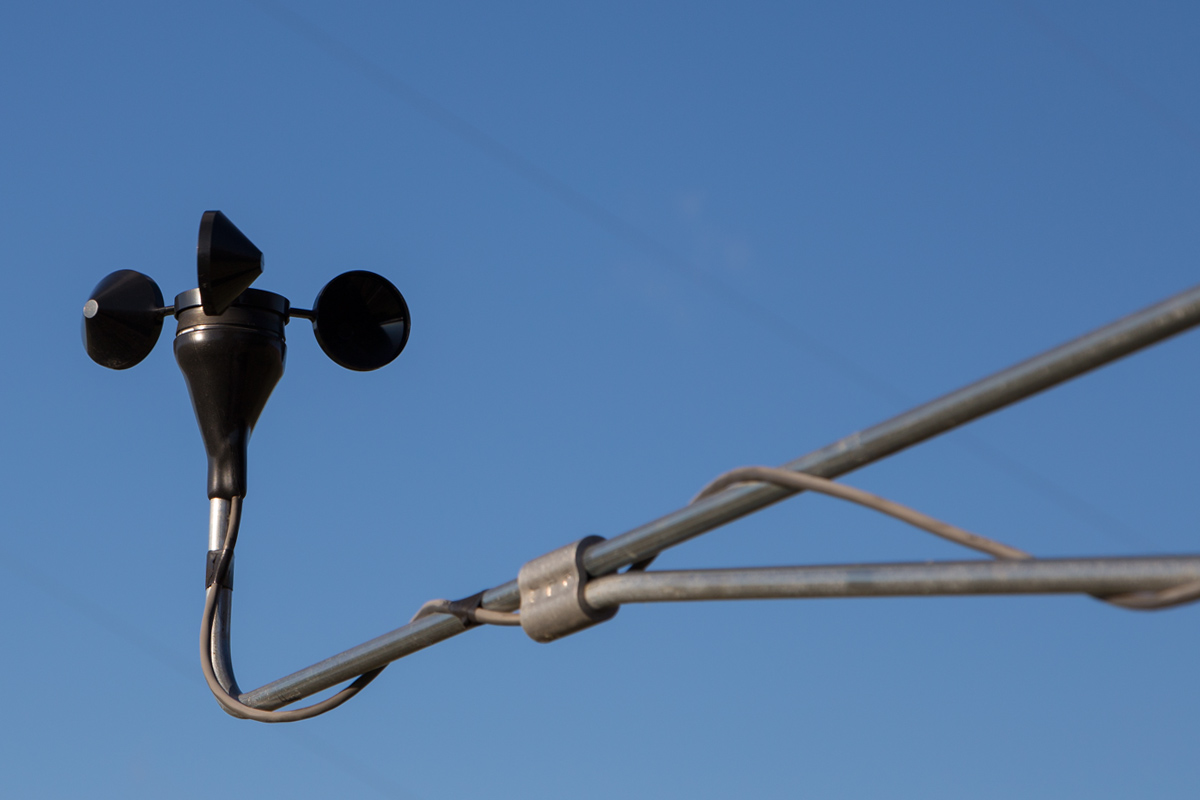How to Preserve and Take Care Of Your Anemometer to Guarantee Durability
Discovering the Functions and Benefits of Anemometers for Weather Enthusiasts and Professionals
From cup anemometers to sonic anemometers, each kind brings its one-of-a-kind set of advantages and applications, shedding light on different elements of atmospheric problems. As we delve right into the functions and advantages of anemometers, a much deeper understanding arises not only of dominating weather sensations however additionally of the broader effects for markets like wind energy manufacturing and environmental research study.
Importance of Anemometers in Weather Tracking
Anemometers play an important role in climate tracking by providing precise measurements of wind speed, assisting in forecasting and understanding climate patterns. These instruments, varying from traditional cup anemometers to contemporary ultrasonic anemometers, are important for meteorologists, scientists, and weather lovers alike. By measuring wind rate, anemometers aid in figuring out the strength of weather condition sensations such as storms, tornadoes, and storms. Furthermore, they give important information for air travel, maritime procedures, and various industries that are sensitive to wind conditions.

Types of Anemometers and Their Applications
The most common kinds of anemometers include mug anemometers, vane anemometers, hot-wire anemometers, and ultrasonic anemometers. Cup anemometers are composed of three or 4 cups installed on straight arms that turn with the wind, gauging its speed. Vane anemometers, on the various other hand, utilize an openly rotating vane to line up with the wind direction, supplying both wind rate and direction dimensions.
Mug anemometers are robust and appropriate for general weather tracking, while vane anemometers are preferred for directional dimensions. Ultrasonic anemometers are non-intrusive and supply high accuracy, typically made use of in study and specialized weather monitoring applications.
Advantages of Utilizing Anemometers in Forecasting
In meteorology, the utilization of anemometers offers invaluable benefits for boosting the precision of weather condition projecting. Anemometers determine wind speed and direction, providing crucial information for forecasting weather condition patterns. By incorporating wind data right into projecting designs, meteorologists can better recognize the activity of weather condition systems, expect modifications in atmospheric problems, and problem more specific projections.
Furthermore, anemometers play an essential role in analyzing possible weather hazards. Checking wind rates helps forecasters forecast severe weather occasions such as typhoons, hurricanes, and wintertime storms with higher accuracy. This very early warning system enables authorities to provide timely informs and implement essential security actions, minimizing the risks to life and property.
In addition, anemometers assist in enhancing renewable resource production. By examining wind patterns, meteorologists can recognize suitable places for wind ranches and predict energy result, contributing to the reliable generation of wind power.

Anemometers in Wind Power Production
Provided the essential role anemometers play in providing accurate wind data for weather condition projecting and danger analysis, their significance reaches the realm of wind energy production. Anemometers are crucial tools in the area of wind energy, where the additional info measurement of wind speed and direction is essential for identifying the expediency and effectiveness of wind turbine setups. By precisely determining wind rates at varying heights, anemometers help optimize the placement and design of wind turbines to optimize power outcome.
In wind ranches, anemometers are tactically put to gather real-time wind data that is used to assess the potential power manufacturing of a site. This data contributes in identifying the economic viability of wind power tasks and in projecting energy generation to guarantee grid stability. In addition, anemometers help in keeping an eye on wind problems to enhance generator efficiency, avoid damage from high winds, and make certain the safety and security of workers operating in the vicinity of wind generators.
Enhancing Weather Condition Recognizing With Anemometers

Anemometers play a key role in boosting our understanding of microclimates. These local weather can vary substantially from wider local forecasts, making it important to check my reference have accurate information for details locations. anemometer. By purposefully positioning anemometers in different locations, scientists can collect in-depth information on how wind acts in various terrains, city settings, or bodies of water
Additionally, anemometers add to improving climate forecasting designs by supplying real-time data on wind behavior. This details is especially important for forecasting serious weather occasions, enhancing farming practices, and supporting industries like aviation and maritime navigating. In general, anemometers are very useful tools that enable us to dive deeper right into the complexities of climate systems, inevitably leading to even more precise forecasts and better-informed decisions.
Conclusion
To conclude, anemometers play an essential function in weather surveillance and forecasting by gauging wind speed and instructions. They are essential tools used by weather condition lovers and experts to collect exact data for anticipating climate patterns and evaluating prospective influences. Anemometers also have applications in wind energy manufacturing, more highlighting their relevance in both weather forecasting and renewable resource sectors. In general, anemometers add to boosting our understanding of weather phenomena and enhancing projecting capabilities. anemometer.
From cup anemometers to sonic anemometers, each kind brings its one-of-a-kind collection of benefits and applications, shedding light on various aspects of atmospheric conditions. These instruments, ranging from conventional cup anemometers to contemporary ultrasonic anemometers, are necessary for meteorologists, scientists, and climate fanatics alike. The most usual types of anemometers include cup anemometers, vane anemometers, hot-wire anemometers, and ultrasonic anemometers. Cup anemometers are robust and suitable for general climate surveillance, while vane anemometers are favored for directional dimensions. Anemometers are necessary tools in the area of wind energy, where the measurement of wind speed and instructions is critical for determining the usefulness and performance of wind more tips here generator setups.